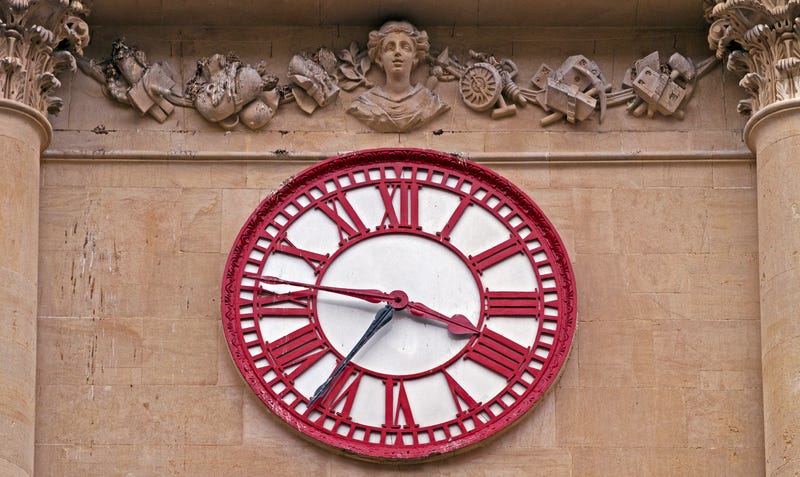The clock with two minute hands
As a new year stretches out before us, take a moment to learn about a timekeeping anomaly from the past.
On the front of a building in the southwest England town of Bristol is a clock with an extra minute hand.
The building is the 18th Century Corn Exchange, a former site of merchant transactions, now offices. The clock above its central doors features two minute hands – one red and one black – just over 10 minutes apart.
Before 1880, there was no standard time in the British Isles. Since around the late 1700s, it had been normal for towns to keep their own local (or solar) time, based on their position in relation to the sun.
The approximately half hour difference between the eastern and western-most geographical locations made little difference in the time before telegraphic communication and rail transportation.
But from the early part of the 19th Century, when communication started to significantly improve, and railways began to be built, those time differences started presenting problems.
Oxford, for example, is 1° 15' 24" west of Greenwich in London. A telegram from Oxford would be received in London (which used time as measured at the Royal Observatory Greenwich) about 5 minutes before it was shown to have been sent.
The Great Western Railway began travelling from London to Bristol – which is 2º 35' west of Greenwich – in 1841. The trains ran on London time. So, if you wanted to catch a train at midday from Bristol Temple Meads station, you had to remember that it would depart at 11.49am local time, as Bristol was just over 10 minutes behind London.
Bristol’s answer to this problem – rather than adopt Greenwich, London time, as many other towns and cities were doing by the mid-1840s – was simply to add an additional minute hand to its central town clock. The black hand showed the local solar time, and the red hand showed the railway (or London) time.
It wasn’t until September 1852 that Bristol officially adopted London time. (Greenwich Mean Time [GMT] became the UK’s standard time zone by law in 1880.) But its central clock retains the local solar time minute hand to this day.
Related info and further reading
Oxford University’s Christ Church College rings its ‘Great Tom’ cathedral bell 101 times at 9.05pm every night. It’s a tradition that dates to the founding of the college in 1546, when the bell rang once for each of the college’s 101 original students, to signify curfew, at what was 9pm Oxford solar time (which is 5 minutes behind GMT).
“The more we synchronize ourselves with the time in clocks, the more we fall out of sync with our own bodies and the world around us.” – The Tyranny Of Time.








